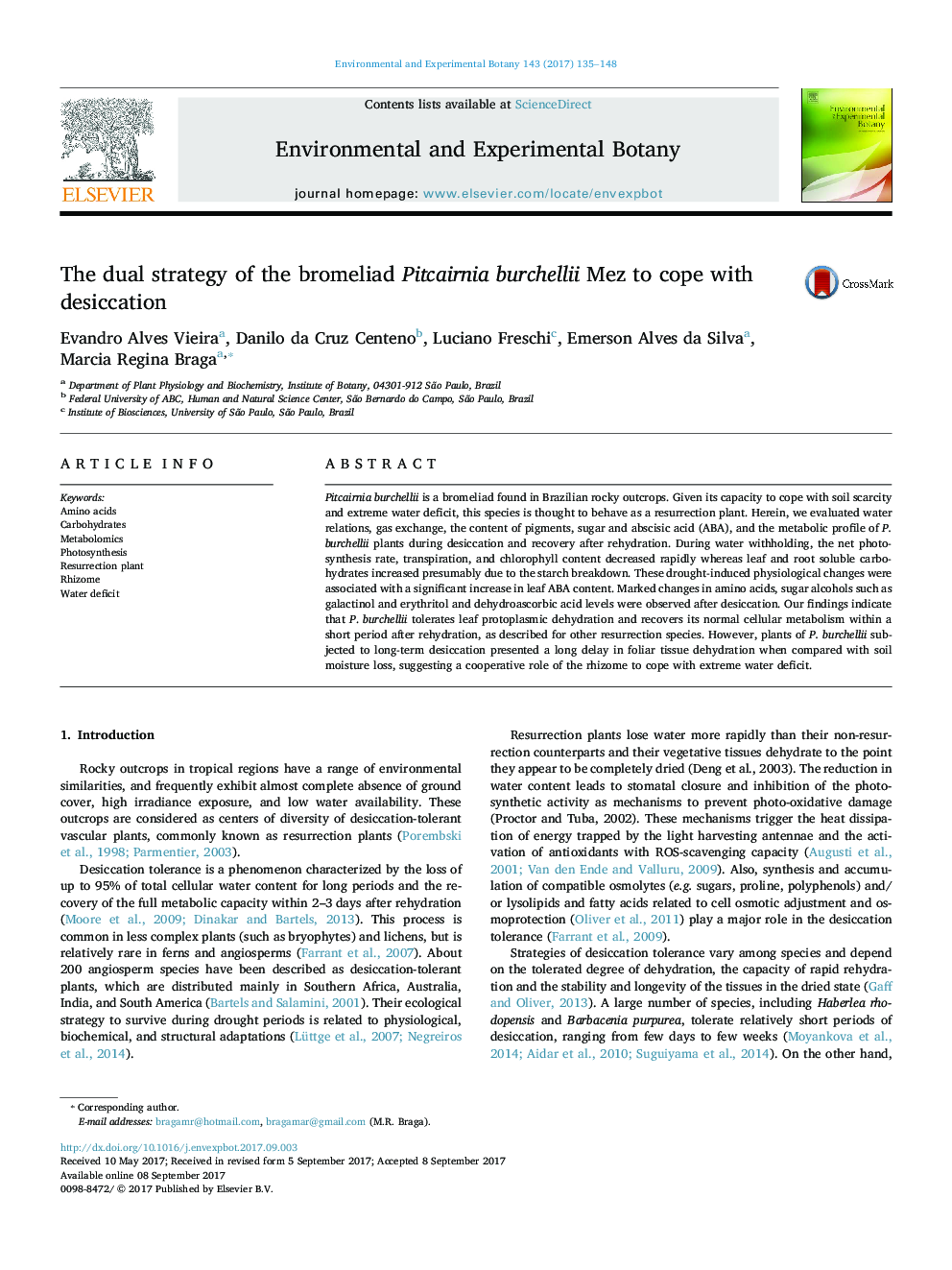| Article ID | Journal | Published Year | Pages | File Type |
|---|---|---|---|---|
| 5766588 | Environmental and Experimental Botany | 2017 | 14 Pages |
â¢Pitcairnia burchellii grows in rocky outcrops under extreme water deficit.â¢Here we examined its physiological responses during desiccation and rehydration.â¢Desiccation markedly changed abscisic acid, sugar alcohols and amino acids contents.â¢Our findings indicate that this bromeliad behaves as a resurrection plant.â¢Tolerance to long-term desiccation suggests the cooperative role of the rhizome.
Pitcairnia burchellii is a bromeliad found in Brazilian rocky outcrops. Given its capacity to cope with soil scarcity and extreme water deficit, this species is thought to behave as a resurrection plant. Herein, we evaluated water relations, gas exchange, the content of pigments, sugar and abscisic acid (ABA), and the metabolic profile of P. burchellii plants during desiccation and recovery after rehydration. During water withholding, the net photosynthesis rate, transpiration, and chlorophyll content decreased rapidly whereas leaf and root soluble carbohydrates increased presumably due to the starch breakdown. These drought-induced physiological changes were associated with a significant increase in leaf ABA content. Marked changes in amino acids, sugar alcohols such as galactinol and erythritol and dehydroascorbic acid levels were observed after desiccation. Our findings indicate that P. burchellii tolerates leaf protoplasmic dehydration and recovers its normal cellular metabolism within a short period after rehydration, as described for other resurrection species. However, plants of P. burchellii subjected to long-term desiccation presented a long delay in foliar tissue dehydration when compared with soil moisture loss, suggesting a cooperative role of the rhizome to cope with extreme water deficit.
